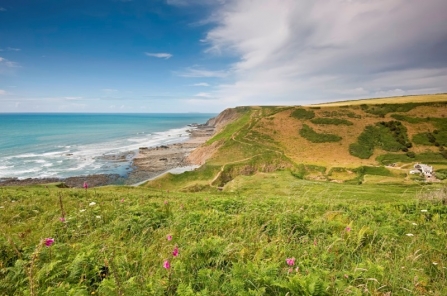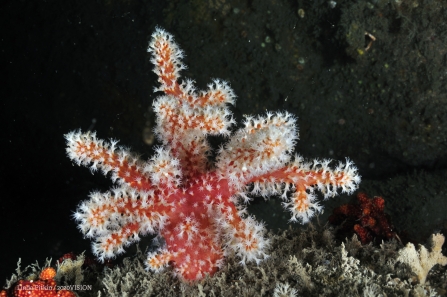It’s one of those days when everything feels just right. The coast is looking its jaw dropping best, the birds wheeling above the cliffs studded with thrift in the very peak of its pinkness, and the sun sparkling on the waves that crash gently against the rocky reefs engulfed in swirling curtains of dazzling white foam. The azure sea stretches out in front of me in its wrinkled vastness towards a dreamy horizon. Moments like this, when the world looks beautiful beyond measure, remind me how lucky I am to live here in Devon. It’s good to be alive today.
Our coastline, and the sea that laps insistently beyond it, is indeed beautiful. But it is not as pristine as it looks. Beneath the waves lie the scars of centuries of heavy fishing pressure, disturbance to the sea bed from a range of activities, dumping of human waste and more recently pollution from agrochemicals and of course plastic. And as the world warms and CO2 levels rise, even greater threats are emerging - climate change and ocean acidification, which threaten entire marine ecosystems and groups of marine creatures. These are troubled times for our seas.
In the last few years we’ve made progress, it’s true. More than 90 Marine Conservation Zones have been designated, 15 of these around Devon’s shores. Stricter laws to help prevent overfishing, a ban on discards and protection for key species like the Harbour Porpoise have all helped to slow the decline in our marine environment. But there are problems. Many of our designated sites only protect a certain number of features on the sea floor. They don’t provide room for enhancing the quality of marine habitat or restoring the huge amount that has been lost. Neither do they protect the fish and other species that venture in and out of these areas. Implementing and enforcing the rules is proving tricky too – according to the Marine Conservation Society, only 1% of marine protected areas are well managed. Last autumn a “supertrawler” spent several days cruising up and down the English Channel scooping up hundreds of tonnes of fish a day, many of them within protected areas. And it did this with total impunity.



